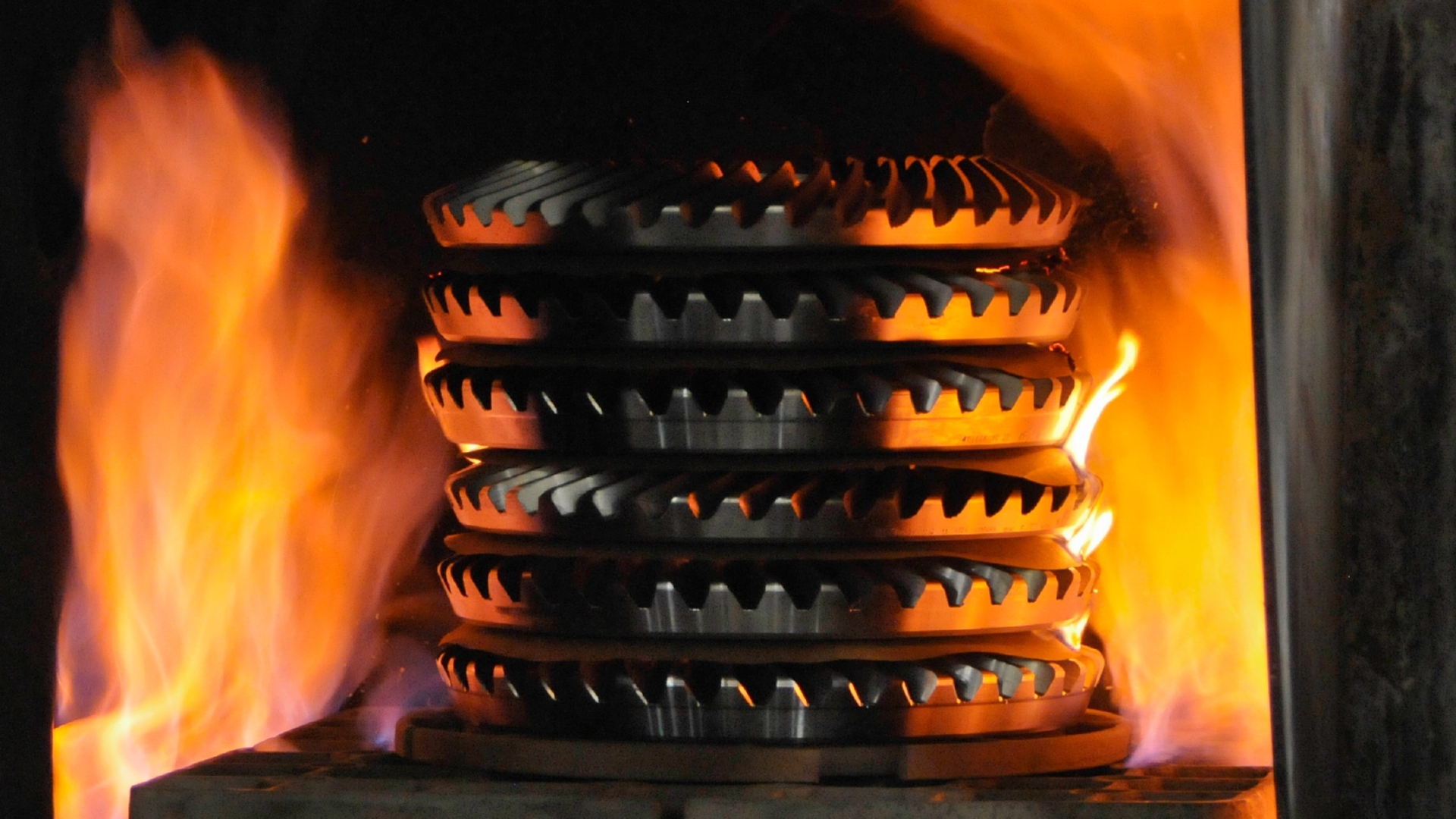Improving vehicle efficiency thanks to axle gearing
By Cummins Inc., Global Power Technology Leader

What is axle gearing?
Axle gearing plays a critical role in vehicle performance. It determines how efficiently engine power is delivered to the wheels, which directly impacts fuel efficiency, torque, acceleration, and the ability to climb grades. Selecting the right axle gearing can lead to lower fuel costs, improved drivability, and fewer maintenance issues throughout the vehicle’s life cycle.
At Cummins, we are committed to helping customers match the right axle gear ratio to each application for maximum performance and return on investment. As powertrain systems become more complex, proper axle gear ratio ensures that vehicles remain responsive, efficient, and reliable in real-world operating conditions.
Why are axle gear ratios important?
The axle gear ratios define the relationship between engine speed (RPM) and wheel speed. At cruising speed, lower numerical gear ratios allows the engine to operate in its optimal RPM range. In certain application such as vocational, higher numerical gear ratios ensures there is enough torque to get the vehicle moving uphill. Anyone who has ever driven a car with manual transmission understands this well and has learned to shift transmission gears appropriately while driving.
But there is another set of gears that couples the driveline to the wheel: axle gears. Unlike transmission gearing, axle gear ratios are fixed. Having the correct axle gear ratio for a vehicle’s primary application is important.
For example, a truck intended for regional haul with frequent stops may benefit from a higher axle gear ratio. In contrast, linehaul fleets that prioritize fuel economy on flat highways typically benefit from lower axle gear ratios that reduce engine RPM at cruising speed.
A well-optimized powertrain with the correct axle gear ratio saves fuel, reduces unnecessary engine strain and supports sustainability targets. That is why Meritor and Cummins engineering teams work closely with truck manufacturers and fleets to choose the best axle ratios for the job.
What are gear ratios?
Axle gear ratios are expressed numerically—such as 4.10:1, 3.70:1, or 2.15:1—and represent the number of times the driveshaft must turn to spin the wheels once. For example, with a 4.10 axle ratio, the driveshaft must turn 4.10 times for each full wheel rotation. This ratio is determined by the number of teeth on two internal components: the ring gear and the pinion gear.
It is easy to confuse related terms. Here is a quick breakdown:
- Gear ratio: The numerical relationship between one or more meshing gears.
- Gearing: The system of gears across all or part of the drivetrain.
- Gearbox: Another word for the transmission—which shifts through multiple gear ratios while driving.
- Ring gear: A large gear inside the axle that receives power from the pinion gear and turns the wheels
- Pinion gear: A small gear connected to the driveshaft that delivers power into the axle by turning the ring gear.
Unlike the transmission, which adapts to changing speeds, the axle’s gear ratio is fixed—and forms the final drive of the powertrain. Selecting the right one is essential for aligning engine output with the vehicle’s duty cycle.
Understanding gearing and how gearing impacts efficiency and performance helps fleets tailor their vehicles for specific duty cycles. Differences between direct drive and overdrive configurations can affect fuel efficiency, power delivery, and overall drivability.
Meritor’s 14X HE axle line offers low-friction, high-efficiency gearing options designed for applications ranging from urban delivery to long-haul transport. Since gear ratios are not one-size-fits-all, they must be matched to the vehicle’s application.
This is where engineering support and data analytics come into play, helping customers identify the best configuration for performance, profitability and durability.
How gearing technology has evolved over time?
Axle gearing has come a long way from one-size-fits-all setups. Today’s axle gear sets are engineered with precision to deliver performance, efficiency and reliability. Meritor’s high-efficiency axles, for example, are designed to reduce friction and heat at the gear mesh, delivering better fuel economy without sacrificing durability.
The Meritor 14X HE SFR 2.05 axle, when paired with the Cummins X15™ engine and the Endurant automated manual transmission, is designed to deliver fuel economy gains compared to prior models. It is a powertrain engineered for maximum efficiency down to every gear tooth. These advancements enable smarter gearing choices that reduce total cost of ownership and support sustainable transportation goals.
Engineering teams at Cummins, Meritor, and Eaton Cummins work closely to develop integrated systems. These teams ensure that engines, transmissions, and axles are not only compatible but optimized to work together. This collaboration allows for smarter gearing strategies that reflect real-world conditions and customer feedback.
Today, axle gearing isn’t just a component; it’s a strategy. One that’s driven by data, shaped by engineering, and built for the road ahead. With each innovation, Cummins is helping fleets achieve better performance, more uptime, and a lower carbon footprint
Author Profiles

Cummins Inc., Global Power Technology Leader
Cummins Inc., a global power leader, is committed to powering a more prosperous world. Since 1919, we have delivered innovative solutions that move people, goods and economies forward. Our five business segments—Engine, Components, Distribution, Power Systems and Accelera™ by Cummins—offer a broad portfolio, including advanced diesel, alternative fuel, electric and hybrid powertrains; integrated power generation systems; critical components such as aftertreatment, turbochargers, fuel systems, controls, transmissions, axles and brakes; and zero-emissions technologies like battery and electric powertrain systems and electrolyzers. With a global footprint, deep technical expertise and an extensive service network, we deliver dependable, cutting-edge solutions tailored to our customers’ needs, supporting them through the energy transition with our Destination Zero strategy. We create value for customers, investors and employees and strengthen communities through our corporate responsibility global priorities: education, equity and environment. Headquartered in Columbus, Indiana, Cummins employs approximately 70,000 people worldwide and earned $3.9 billion on $34.1 billion in sales in 2024.
Related Topics